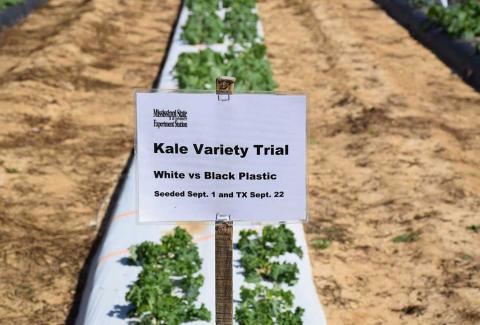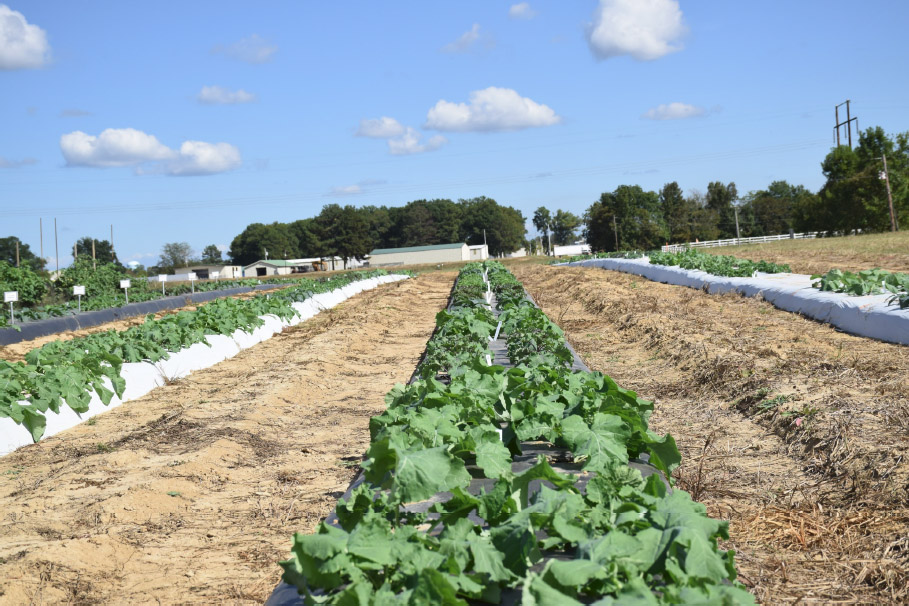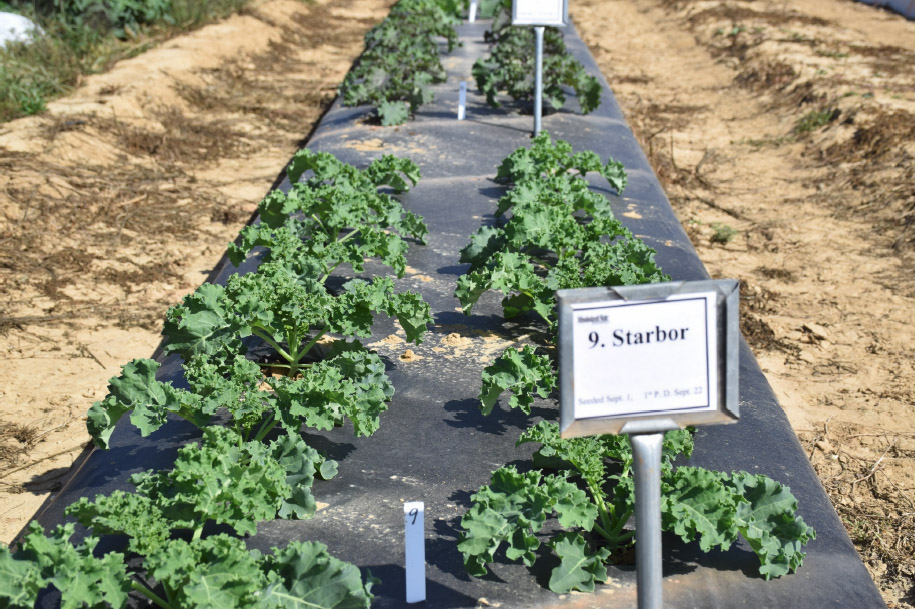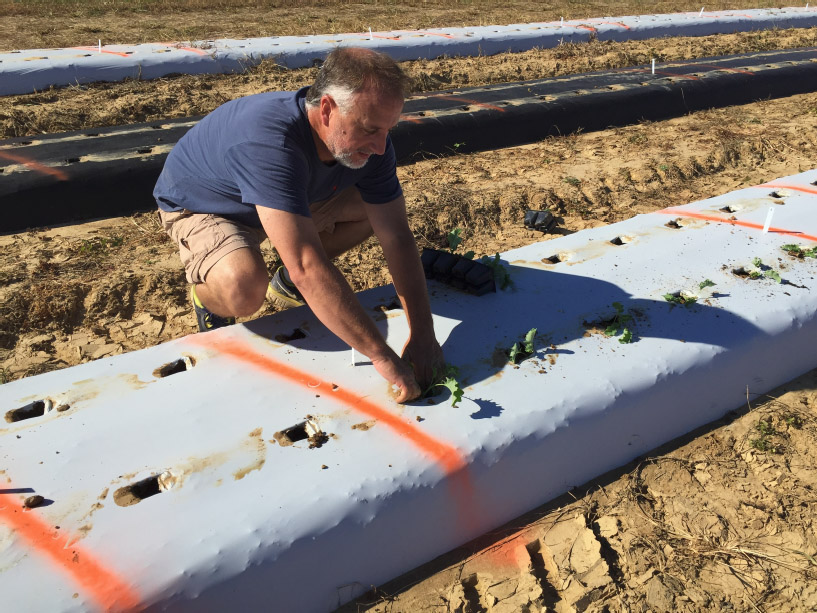Introduction: Kale (Brassica oleracea) is a popular cold season vegetable crop that is high yielding and nutrient dense. Kale is usually grown under black plastic mulch when transplanted in the spring or fall growing season. Differences in plastic mulch color, such as black and white, can give advantages to vegetable crop growth, yield, and quality in either season. Therefore, the purpose of this project is to evaluate 13 kale varieties (Table 1) for marketable yield and quality in the fall 2015 and spring 2016 seasons under black or white plastic mulch.
Methods: Evaluation of 13 kale varieties were seeded n the greenhouse 1 Sept. 2015 at NMREC and transplanted to the field 22 Sept. The Beaumont fall kale was seeded in the greenhouse on 29 Sept. and transplanted to the field 22 Oct. Kale transplants were grown under black or white plastic mulch at the North Mississippi Research and Extension Cen-ter (NMREC), Verona, MS and the Beaumont Horticulture Unit, Beaumont, MS. All plots were fertilized with conventional fertilizers according to Mississippi State Soil Testing Lab
results (60N, 50P, 200K lbs/ac). The experimental design was a 13 (kale varieties) x 2 (plastic mulch) factorial design arranged in randomized complete block with 4 replications. Plant beds were formed with a press-pan-type bed shaper, 6 inches high and 30 inches wide. In-row plant spacing was 1.0 ft with 2 staggered rows on each bed and beds were spaced 8.0 ft apart. Every plot consisted of 10 plants with the center 6 plants harvested for data. Spring 2016 plantings will be identical to compare the two seasons and locations.
Results: There were significant differences in plant height and stem weight when comparing kale variety (Table 2) and plastic mulch treatments (data not shown) at the NMREC location. The highest yielding varieties at the NMREC were Premier (3.6 kg), Siberian (3.5 kg), and Hanover Salad (3.2 kg) (Table 2). The highest yield-ing dinosaur kale variety was Black Magic (2.5 kg) (Table 2). At the Beaumont Horticulture Unit, significant differences were observed in the categories of plant dry matter and stem weight (Table 2) when comparing the plastic mulch treatments (data not shown). The highest yielding varieties proved to be Siberian (2.3 kg), Hano-ver Salad (2.4 kg), and Premier (2.6 kg) (Table 2). Black Magic was also shown to be the largest producing dinosaur kale variety with an average weight of 1.0 kg. The spring 2016 study will evaluate the same treatments and will be compared to the 2015 study at both locations.





